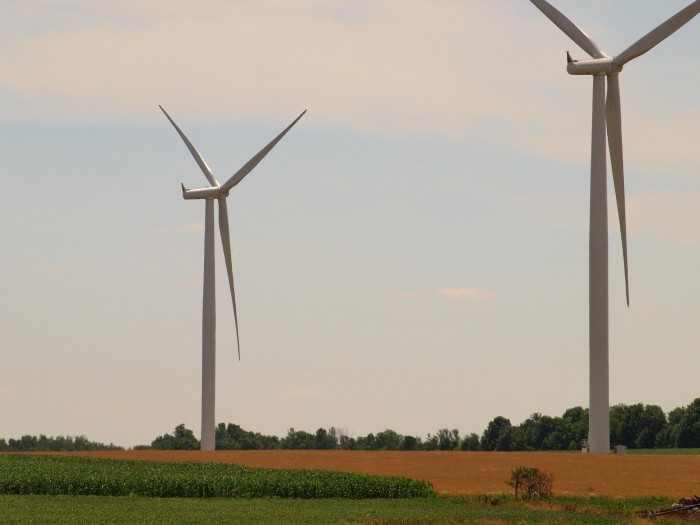George W. Bush Helped Make Texas a Clean-Energy Powerhouse
Texas is crushing its clean power goals. Ever since 1999, when then-governor George W. Bush signed a law deregulating the state’s power market, Texas has been building wind turbines like crazy. And the boom isn’t likely to end anytime soon, thanks to a combination of federal subsidies and the falling cost of both wind and solar.
As the Wall Street Journal reports, as part of the 1999 law, Bush included a provision that called for 2,000 megawatts of renewable power capacity by 2009. That milestone came four years early. Bush’s successor, Rick Perry, raised the bar to 10,000 megawatts by 2025.
The state blasted past that milestone as well. As of April this year, it had an astonishing 19,000 megawatts of renewables, enough capacity to power 4 million homes and good for about 16 percent of the state’s total energy diet. The vast majority of that is wind: nearly 18,000 megawatts, far and away the nation’s leader.

Such a massive boom in renewables comes with some problems, though. First, the Texas grid is straining to move all of that wind power from the rural places where it’s generated to the cities where it’s needed. New transmission lines are helping, but wind power figures continue to grow. There are big plans for new solar capacity as well, about 6,000 megawatts’ worth, so the transmission bottleneck is likely to remain an issue going forward.
Second, wind and solar are intermittent and only provide power when the wind blows or sun shines. This is a tough problem, but utilities are exploring ways around it, like using grid-scale batteries combined with some smart software to make virtual grids that smooth out the peaks and troughs in power generation. And if conventional lithium-ion batteries prove too expensive to scale up storage capacity, there’s always the chance that abandoned oil and gas wells could do the trick.
(Read more: Wall Street Journal, “In Texas Oil Country, Wind Is Straining the Grid,” “Texas and California Have Too Much Renewable Energy,” “Virtual Power Plants Get Around Solar Power’s Intermittency Problem”)
Keep Reading
Most Popular
Large language models can do jaw-dropping things. But nobody knows exactly why.
And that's a problem. Figuring it out is one of the biggest scientific puzzles of our time and a crucial step towards controlling more powerful future models.
How scientists traced a mysterious covid case back to six toilets
When wastewater surveillance turns into a hunt for a single infected individual, the ethics get tricky.
The problem with plug-in hybrids? Their drivers.
Plug-in hybrids are often sold as a transition to EVs, but new data from Europe shows we’re still underestimating the emissions they produce.
Stay connected
Get the latest updates from
MIT Technology Review
Discover special offers, top stories, upcoming events, and more.